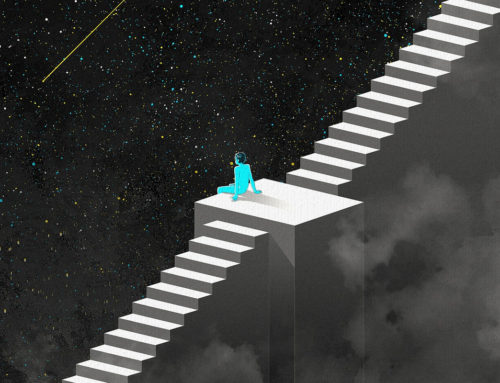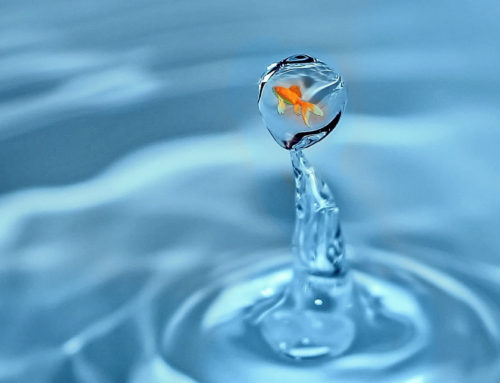When learning to lucid dream, it is paramount that you use a lucid dream initiation technique to help you cross over into lucidity. There are a few different tried and true techniques with varying degrees of difficulty for you to choose from, and they are broken down into two main categories: Dream-Initiated and Wake-Initiated.
Here we’ll go into detail on what those mean and the various techniques that fall under these categories.
For anyone just starting out, we highly recommend that you follow our Roadmap to Lucid Dreaming to help you make the most out of your efforts and have you successfully lucid dreaming as soon as possible. This article is part 3/5 in the series.

List of Lucid Dream Initiation Techniques:
Dream-Initiated LD Techniques
Dream-Initiated Lucid Dreams are when a dreamer initiates a lucid dream while they are already within a non-lucid dream. The main focus of techniques under this category are generally on conducting reality checks and identifying other signs that can help you to realize when you are in a dream. Becoming lucid spontaneously also fits into this category.
Dream-Initiated Lucid Dreaming (DILD)
At its core, the DILD technique is simply becoming aware that you’re in a dream through one of two ways: recognizing absurdities (things that couldn’t happen in waking life) or by conducting reality checks to assess whether the world around you is ‘real’ or not.
Dream-Initiated Lucid Dreaming is most commonly done by conducting reality checks throughout your day, with the hope that you will carry that habit over to your dreams. In essence, reality checks are any technique you use to test your current reality to determine whether or not you’re dreaming. You can find a list of these techniques and an overview on how to use them in our List of Reality Check Techniques.
Beyond making a habit of conducting reality checks, you can look for what is known as dream signs to alert you when you might be dreaming. Dream signs are recurring elements of your dreams that are personal to you. To use these dream signs for inducing lucid dreaming, you should look through your dream journal logs and identify objects, places, people, etc. that frequently show up in your dreams (i.e. dream signs) and make a mental note to do a reality test any time you see them. For instance if you dream of being at the park often, remind yourself to conduct reality checks each time you’re at a park.
If your dream signs are things that would not occur in waking life — seeing a unicorn, for example — then you can instead make a mental note that you are dreaming if you encounter them. For best results, say out loud to yourself before bed each night “I will have a lucid dream tonight. When I see a unicorn, I will know that I am dreaming.”
Mnemonic Induced Lucid Dreaming (MILD)
MILD is an aid technique to the standard Dream-Initiated Lucid Dream approach developed by Stephen LaBerge, Ph.D. the American psychophysiologist and lucid dream researcher who proved with an evidence-based approach that lucid dreaming is real. He has since helped to popularize lucid dreaming and contributed greatly to its research and practice and community.
MILD stands for Mnemonic Induced Lucid Dream, wherein you set the intention to have lucid dreams. Just by setting the specific intent to lucid dream, such as telling yourself “I am going to lucid dream tonight”, one can improve upon the success of the standard DILD technique. Generally, all that is needed is to tell yourself something to the effect of “Next time I’m dreaming, I will realize I’m dreaming” or repeating similar mantras to oneself throughout the day and especially before going to bed.
Light Induced Lucid Dreaming (LILD)
Light Induced Lucid Dreaming (LILD) is when a dreamer uses an external device that flashes a red LED light above their eyelids while they are dreaming. The flash produced by the light is usually visible in the dream, and alerts them to the fact that they are asleep. It is essentially used as an artificial dream sign, and works the same way as regular dream signs. Because of that, it still takes practice to recognize that the flashing light is an indicator that you are dreaming.
The most notable device for this has so far been the (now discontinued) NovaDreamer device, which monitors your eyes for the Rapid Eye Movement (REM) associated with the stage of human sleep that typically produces the longest and deepest dreams.
Another example device is the Remee, which is still commercially available, but has been generally disregarded as a serious alternative to the NovaDreamer, because it does not monitor user eye movement. Instead, it relies on the user to fine tune its timer to suit them over time, which people have found to be unreliable in most cases.
You can find out more about lucid dreaming devices, technologies, and dream enhancers by looking around in our Dream Enhancement Category

Wake-Initiated LD Techniques
Wake-initiated lucid dreaming techniques are ones where the dreamer goes directly from a waking state into a lucid dream. Wake-initiated dreams tend to require a higher degree of patience and practice than their dream-initiated counterparts, and can sometimes result in poorer sleep quality and sleep paralysis. As such, we recommend that the inexperienced first start with dream-initiated techniques until they are more accustomed to maintaining lucidity.
Wake Initiated Lucid Dreaming (WILD)
Wake-Initiated Lucid Dreaming (WILD) is characterized by entering a dream directly from a waking state. In its simplest form, it is just maintaining focus and awareness as you fall into slumber. This method alone is not recommended for nightly sleep, as it can disrupt your sleep cycle, and is somewhat wasteful given that dreams are the shortest when we first fall asleep. Below are some adapted methods like the Wake-Back-to-Bed technique (WB2B) that make better use of the wake-initiated methods.
It is also worth noting that the basic WILD method has a better chance at success if you are taking a nap, as people often fall directly or more quickly into REM sleep (the stage of sleep that yields the most dreams).
Wake Back-to-Bed (WB2B)
Wake-Back-to-Bed is an adaptation of the wake-initiated lucid dream (WILD) method. It takes the same practice of entering the dream state directly, but leverages the best time in the night to do so.
To use the WB2B method properly, you set an alarm for roughly 5 to 5 ½ hours after you go to bed, then wake up and stay awake for 10-20 minutes before going back to bed and attempting to enter the dream state directly whilst maintaining conscious awareness. This works the same way as the regular WILD technique, but it is usually easier to go back to sleep after waking around this time, and there is typically more dreaming going on at this stage in the night than when you first go to bed. Because of this, it is likelier that you will enter a dream directly, and the dream will be longer than if you had attempted when you first went to bed.
To further improve upon this method’s success, it is recommended that you use the 15 minutes in which you stay awake to reaffirm your intent to have a lucid dream, conduct a reality check, or to read through entries in your dream journal.
Custom Alarm Noise Wake Initiated Lucid Dream (CANWILD)
CANWILD is a wake-initiated method popularized only in recent years. It can be seen as the sound-based equivalent to Light Induced Lucid Dreams (LILD), and uses a similar principle with elements of the WB2B method mixed in.
To use the CANWILD method, you set an alarm for 5 – 5 ½ hours from when you normally fall asleep, just like in Wake-Back-to-Bed. The difference, however, is that you use an alarm that shuts off after a set amount of time. By doing this, you can use the noise to alert yourself to the fact that you’re asleep, but you don’t have to wake up to turn it off, since it will shut itself off. This way, you can become lucid by recognizing the sound in dream. And because the sound will shut itself off automatically, even if you do wake up you can immediately go back to sleep with the intent to stay consciously aware instead of waiting like in WB2B. Once you have experience recognizing the chosen sound, this can be a highly successful method for consistently lucid dreaming, though it initially takes time to adjust to for most people.
Have a Lucid Dream Tonight
Now that you have learned some reliable induction methods, you can have lucid dreams much more frequently than waiting for spontaneous lucidity or relying on reality checks alone. Remember that all good things take patience, and that lucid dreaming is always worth learning.
Check back for more techniques and discussion on how to lucid dream and what to do in your lucid dreams on our homepage and leave a comment below if you have questions, ideas, or new techniques for lucid dreaming.




